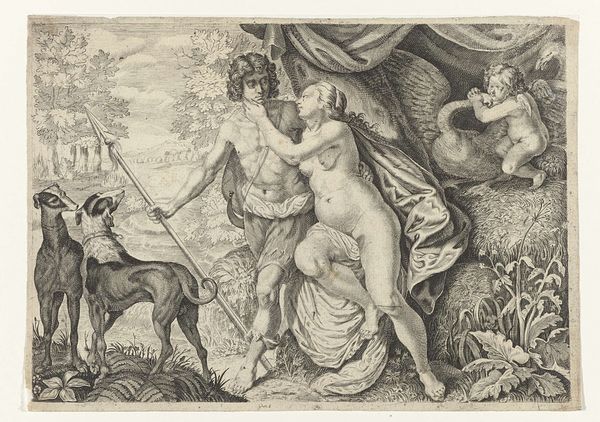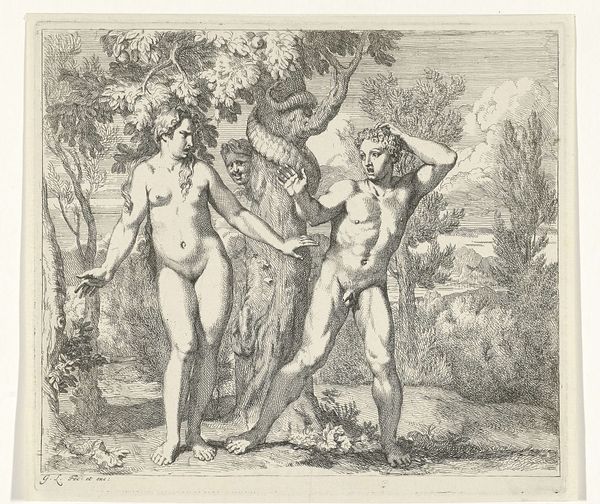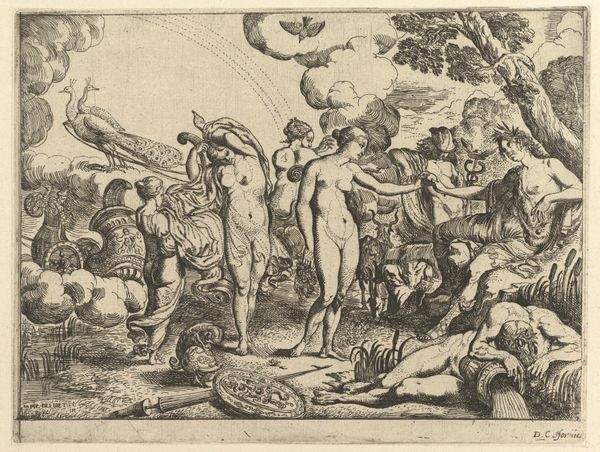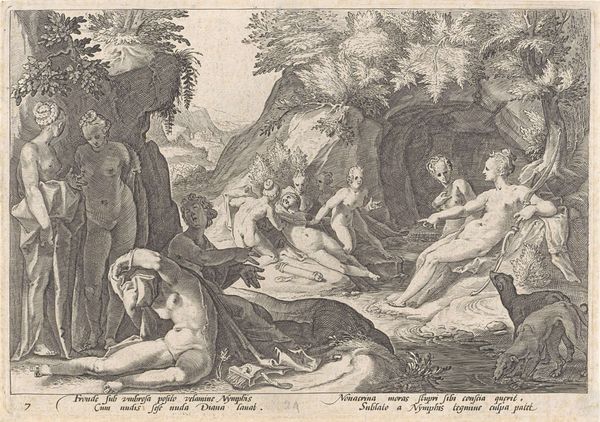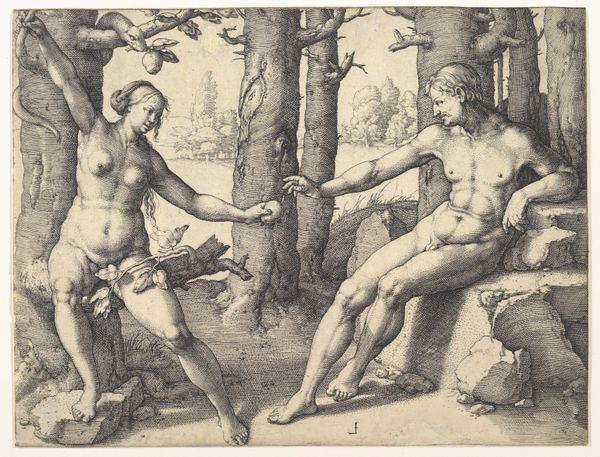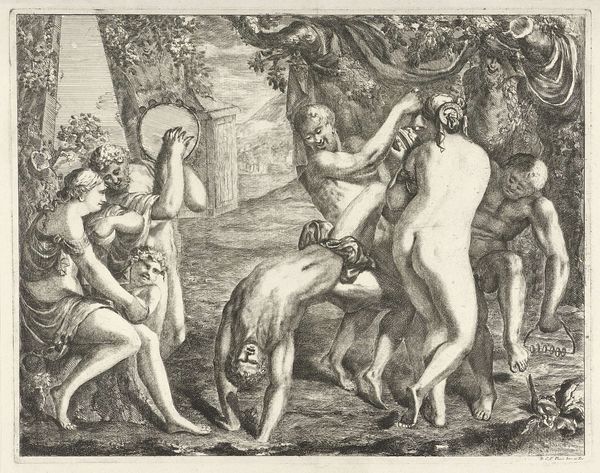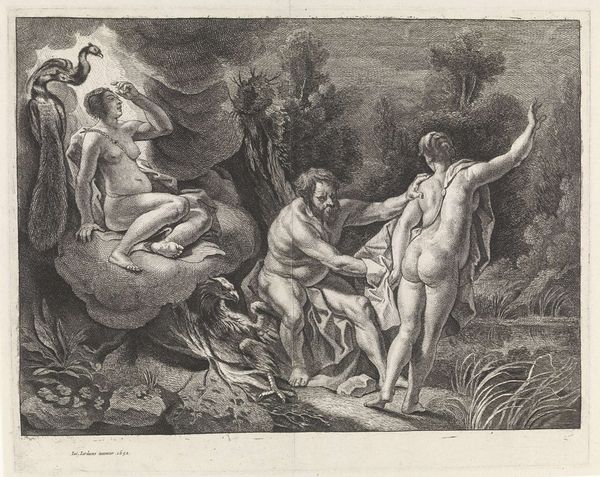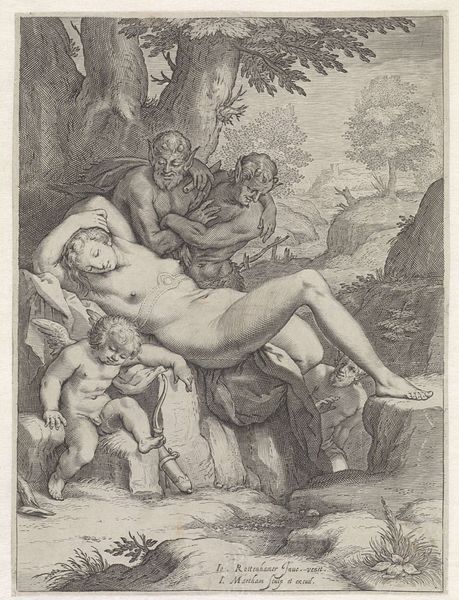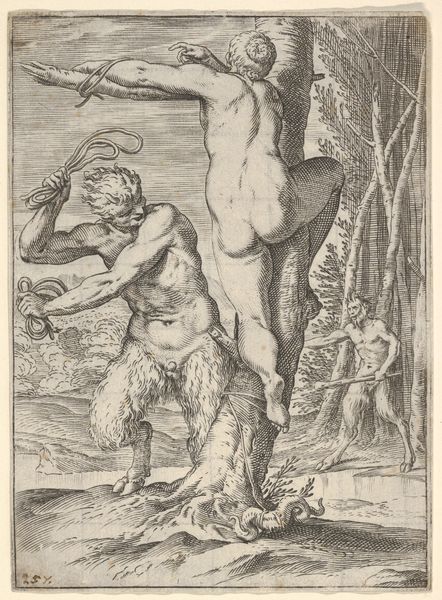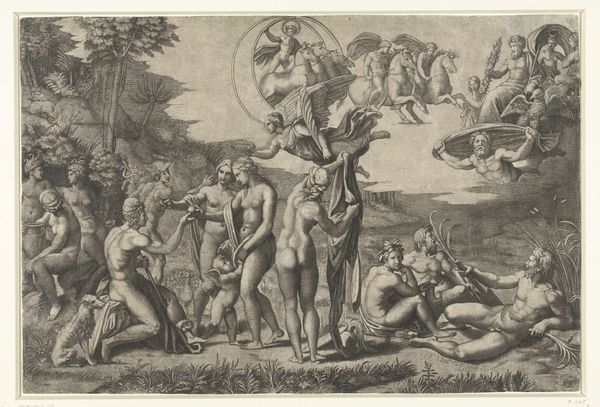
etching, engraving
#
narrative-art
#
etching
#
figuration
#
11_renaissance
#
history-painting
#
northern-renaissance
#
nude
#
engraving
Dimensions: height 141 mm, width 171 mm
Copyright: Rijks Museum: Open Domain
Curator: This engraving by Orazio Borgianni from 1615, housed at the Rijksmuseum, presents a familiar scene: Adam and Eve succumbing to temptation in the Garden of Eden. Editor: My first thought? It's visually chaotic, almost unsettling. The figures feel muscular, tense, not the serene nudes one might expect. Curator: The stark black lines of the etching definitely contribute to that unease. What details stand out to you? Editor: Well, the snake coiled around the tree seems less serpentine, more like a bundle of rough rope, constricting and crude. You know, this rendering moves the traditional iconography of creation towards the artist's experience in early 17th-century print shops and a tactile sense of raw materials. Curator: That's an interesting observation. The roughness emphasizes the labor, the physical act of disobedience. Eve's face almost has an animalistic desperation, don't you think? Borgianni seems interested less in pure beauty and more in the gritty reality of human choice. Editor: Exactly! There's a real sense of labor visualized in every dark, deliberate mark and shadow. It reminds us that art, like the original sin here, is a made thing, and not a heavenly ordained moment. And look how close Adam is to Eve—he assists her. It also moves the artwork toward the theme of labor and partnership and collaboration. Curator: That makes one question: Was there innocence before their collaborative deed, this taking hold together and exchanging of an unknown, tempting idea? Or does Borgianni show us labor as collaboration. I find myself oddly sympathetic toward their grimy bodies, reaching into the tree's limbs together in trust, after all. The artist must have spent long, grueling hours with an etching tool, no doubt imagining a Paradise forever altered through his effort. Editor: True. Thinking about Borgianni’s labor actually enriches the scene, doesn’t it? Now I also see more deeply in these two humans and their own working, breathing relationship—with art itself. Curator: An artistic Eden wrought from choice and work! It shifts the focus from judgment to something akin to our own imperfect acts of making every day. Editor: A powerful subversion through the simplest of materials and craft. I like that shift; thank you!
Comments
No comments
Be the first to comment and join the conversation on the ultimate creative platform.


